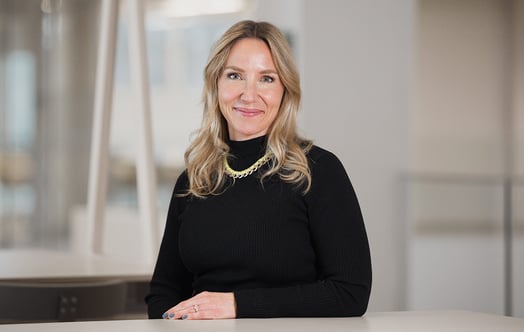At the beginning of September, Vattenfall's CEO Anna Borg brings parts of the company's Group Management to Canada to visit developers of nuclear power technology, power companies and authorities. It is the first in a series of visits to leading nuclear power countries, with the aim of deepening knowledge ahead of a possible new construction of nuclear power in Sweden.

Swedish nuclear power is an important part of the fossil-free energy mix in the country and its importance will increase in line with the increased demand for electricity from Swedish industry and society. In just a couple of decades, electricity demand is estimated to have doubled.
Since the summer of 2022, a feasibility study has therefore been underway to examine the conditions for building at least two new SMR reactors (Small Modular Reactors) next to the Ringhals nuclear power plant. Already since 2020, Vattenfall has also participated in a pilot study together with Fermi Energia on building SMR in Estonia.
During the autumn, Anna Borg, together with a delegation from Vattenfall, will visit a number of selected countries and companies where new nuclear power is being built.
“Vattenfall wants to invest in new nuclear power as well as other fossil-free power types. We are an player with experience, competence and access to places where nuclear power already currently exists. At the same time, no new nuclear power has been built in Sweden for several decades. The purpose of the trip is therefore to deepen the understanding of how new construction of nuclear power can be done quickly and efficiently, lessons learned, pitfalls, background to technology choices and regulatory conditions. We will look at both SMR and large-scale nuclear power,” says Anna Borg.

Subscribe to the newsletter THE EDIT
THE EDIT is Vattenfall's new monthly newsletter. Each issue highlights a new burning issue from the world of sustainable energy and fossil freedom.
In addition to CEO Anna Borg, also CFO Kerstin Ahlfont, Torbjörn Wahlborg, SVP Head of Business Area Generation and Andreas Regnell, SVP Head of Strategic Development will participate, among others.
The delegation will meet with power companies, technology suppliers and authorities connected to the countries' respective nuclear power programs. The countries visited are Canada, France and Great Britain. Representatives from companies in the US and Korea will also be part of the program.
Vattenfall's feasibility study on new SMR reactors will be completed later this year. Within the framework of the pilot study, Vattenfall has started work on producing an environmental impact statement that is needed for an application and has also carried out supplier inquiries. This is necessary to obtain a picture of both costs and other conditions that form the basis of a future investment decision.
Torbjörn Wahlborg says in a comment:
“Different types of power sources have different prerequisites to be able to developed. If a business player is to invest in new nuclear power, Sweden needs to stand behind a nuclear power program. There will be costs that need to be shared between the players. You might need to build several rather than individual reactor as this provides a positive learning curve and increased cost efficiency. Building new nuclear power is also a national priority and therefore it is reasonable to think in terms of a nuclear power program.”



